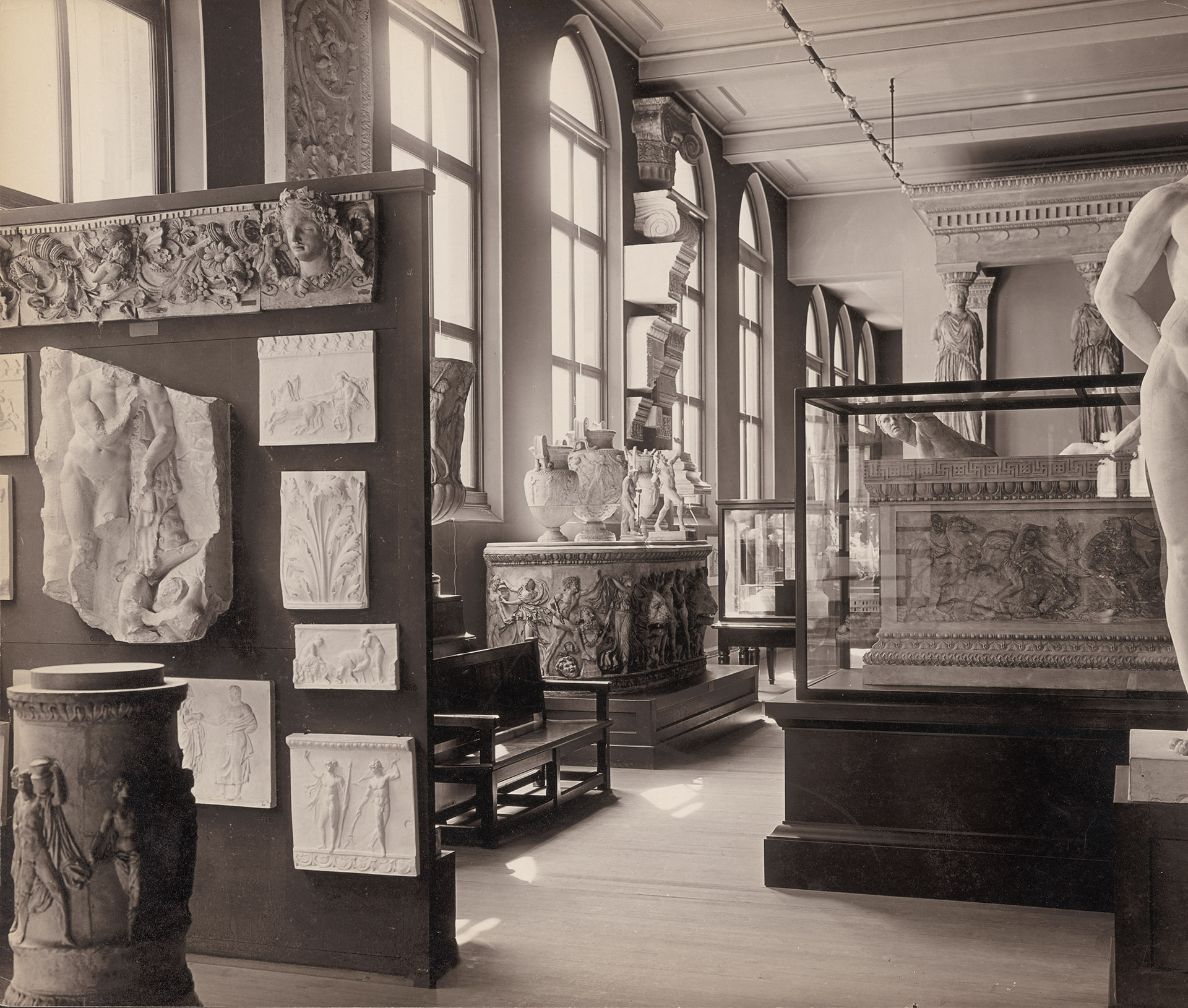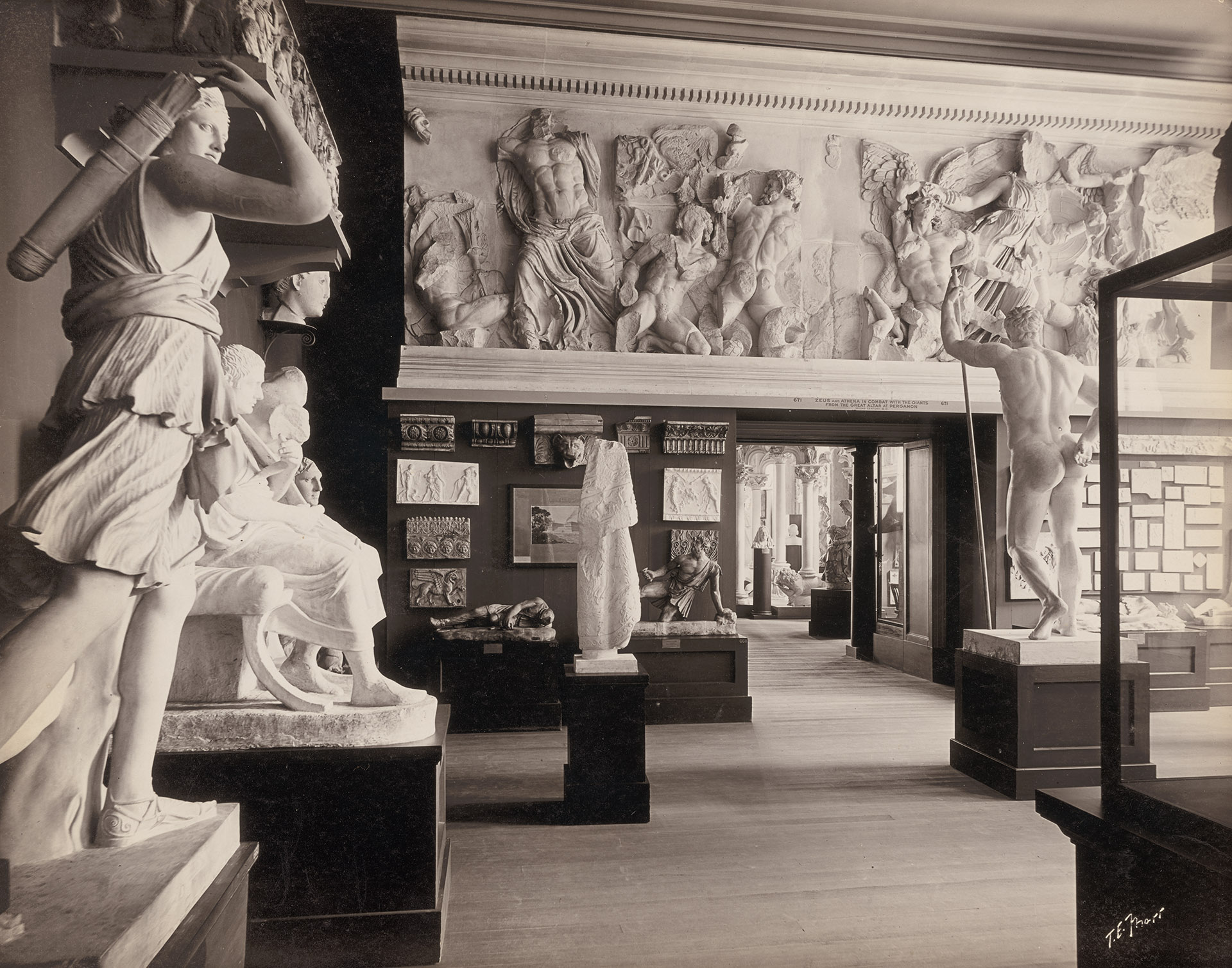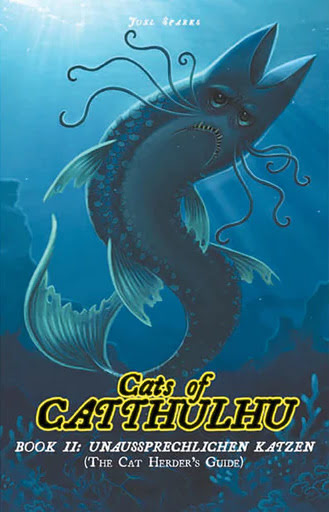This week on ‘Picture Postals from Lovecraft’, more from Boston. H.P. Lovecraft once recalled the time when he was a lad who was becoming interested in the wider world…
As soon as possible I procured an illustrated edition of Bulfinch’s Age of Fable, and gave all my time to the reading of the text, in which the true spirit of Hellenism [the Ancient Greek world] is delightfully preserved, and to the contemplation of the pictures, splendid designs, and half-tones of the standard classical statues and paintings of classical subjects. Before long I was fairly familiar with the principal Grecian myths, and had become a constant visitor at the classical art museums of Providence and Boston. I commenced a collection of small plaster casts of the Greek sculptural masterpieces, and learned the Greek alphabet and the rudiments of the Latin language.

The ‘old’ Boston Museum.
For Boston this meant the Museum of Fine Arts building on Copley Square, demolished in 1909. It was most likely best known by him in his middle-childhood circa 1898-1902 (age 8-12).
Some of the interior photographs currently available make the displays look extraordinarily dull, especially the painting galleries. What then was the attraction for the lad? Well, we know from the above memoir that the young Lovecraft once had an intense passion for classical sculpture and he was often seen haunting the sculpture hall in his own city. His city’s Museum had an entrance hall and exhibit of Greek sculptures, something I’ve posted about here before. As a boy he was fervent to see this when it opened as…
a recently opened exhibit of Greek antiquities at the Rhode Island School of Design
… and thus he pestered his family until he was taken there in 1897.
Therefore the next logical step for the family would be to take him to what is now known to archivists as the “old museum” in Boston, the pre-1909 Museum of Fine Arts.
before long I was fairly familiar with the principal Grecian myths and had become a constant visitor at the classical art museums of Providence and Boston
The attraction there would have been what was obviously a large and very fine collection of sculpture from Greece. He might have seen it from perhaps circa 1898 and onwards. On my assumption that the local 1897 visit in Providence came first, and then the trip(s) to Boston later.
Here then is a glimpse of what the young Lovecraft would have seen in the museum at Boston…

Entrance doors.

Main sculpture hall.








He must have been rapturous with all this, as he then had an “infatuation with the classical world” as S.T. Joshi puts it. This later fed into the setting though not the sentiment for his breakthrough poem “The City” (1919). Of which I have an annotated version from 2019.
This same Museum had several galleries of rather more stolid sculpture from Ancient Egypt.



Quite possibly Lovecraft also later encountered old favourites in the new post-1909 museum building at Boston, which opened in 1909 as the old one came tumbling down. However, on probable re-visits circa 1919, his sense of exhilaration would not have been the same. Evidently some of the Puritan darkness of New England had seeped into his views by 1918, as seen when he remarked in his essay The Literature of Rome…
The Hellenes [Greeks], with their strange beauty-worship and defective moral ideas, are to be admired and pitied at once, as luminous but remote phantoms.
More cheerfully, he would in later years have been looking out for the work of his own ancestor in the Museum…
Samuel Casey, Jun. — my great-great-great-granduncle — was a silversmith of such art and skill that pieces of his work are in both the Boston Museum of Fine Arts and the Metropolitan Museum of New York.
I have a counterfeiter as a great-great-grand-uncle about whom I’ll tell you some time. He was also a silversmith — with pieces surviving in the Metropolitan Museum of N. Y., the Boston Museum of Fine Arts, & elsewhere.
























